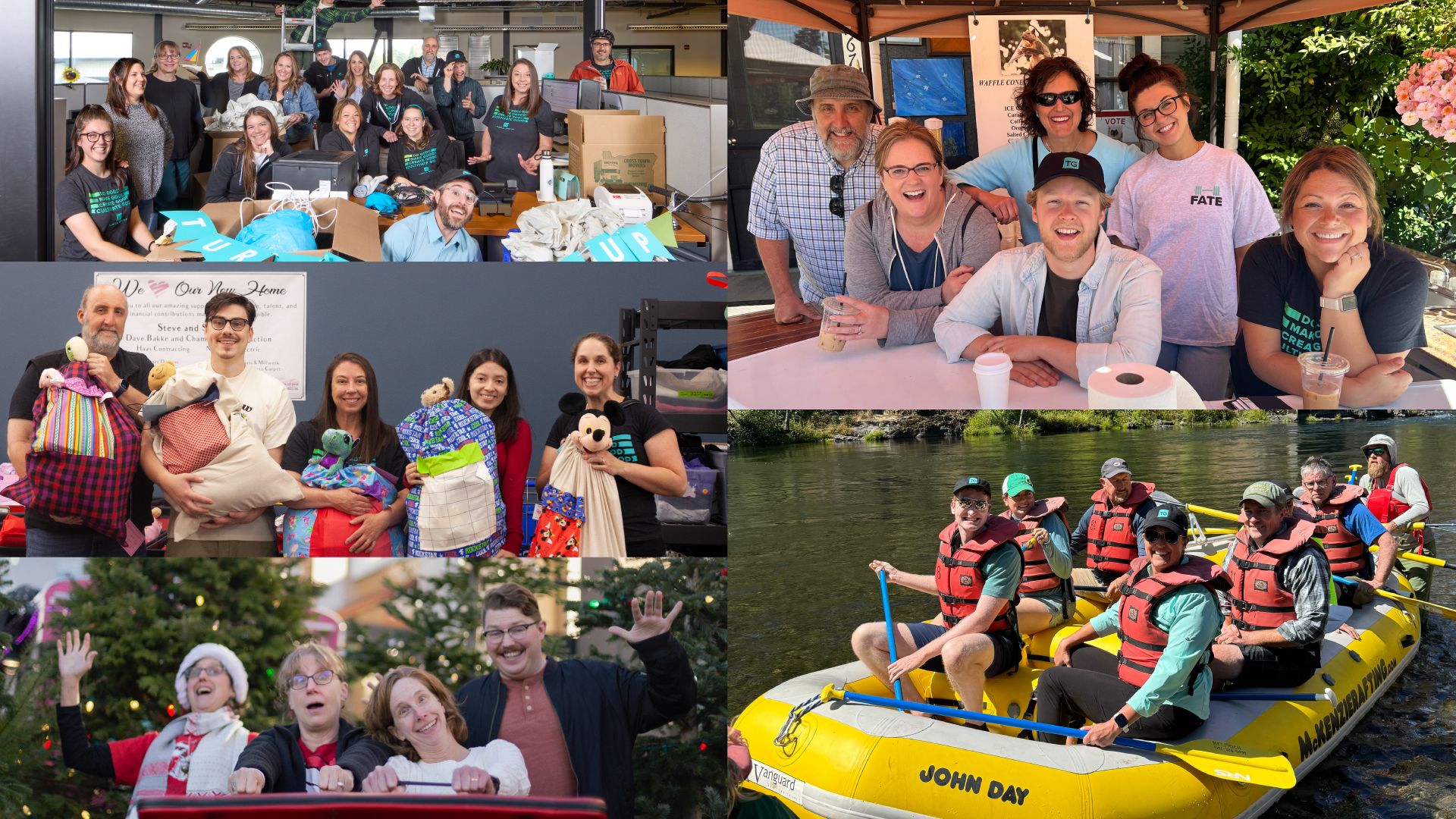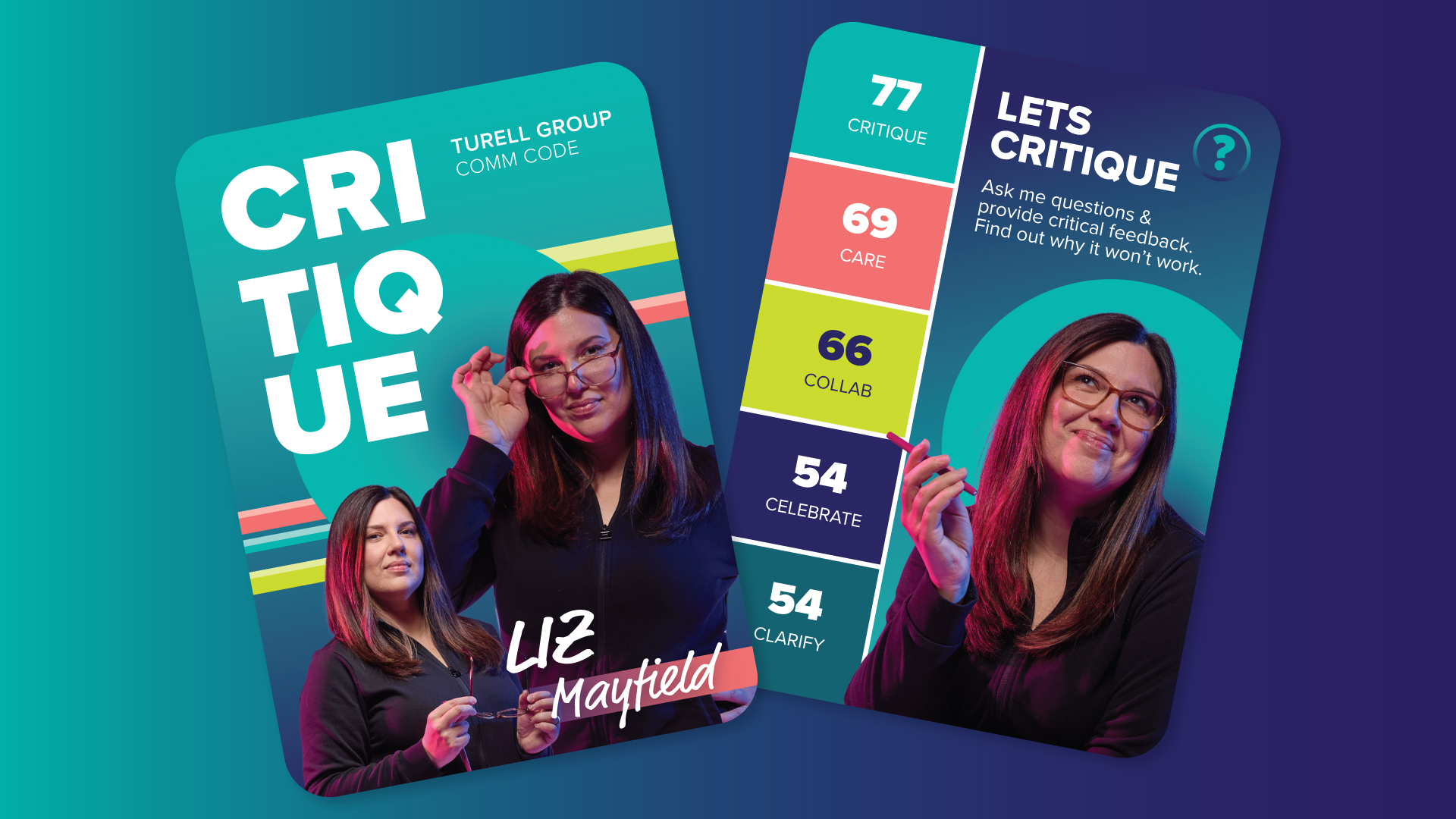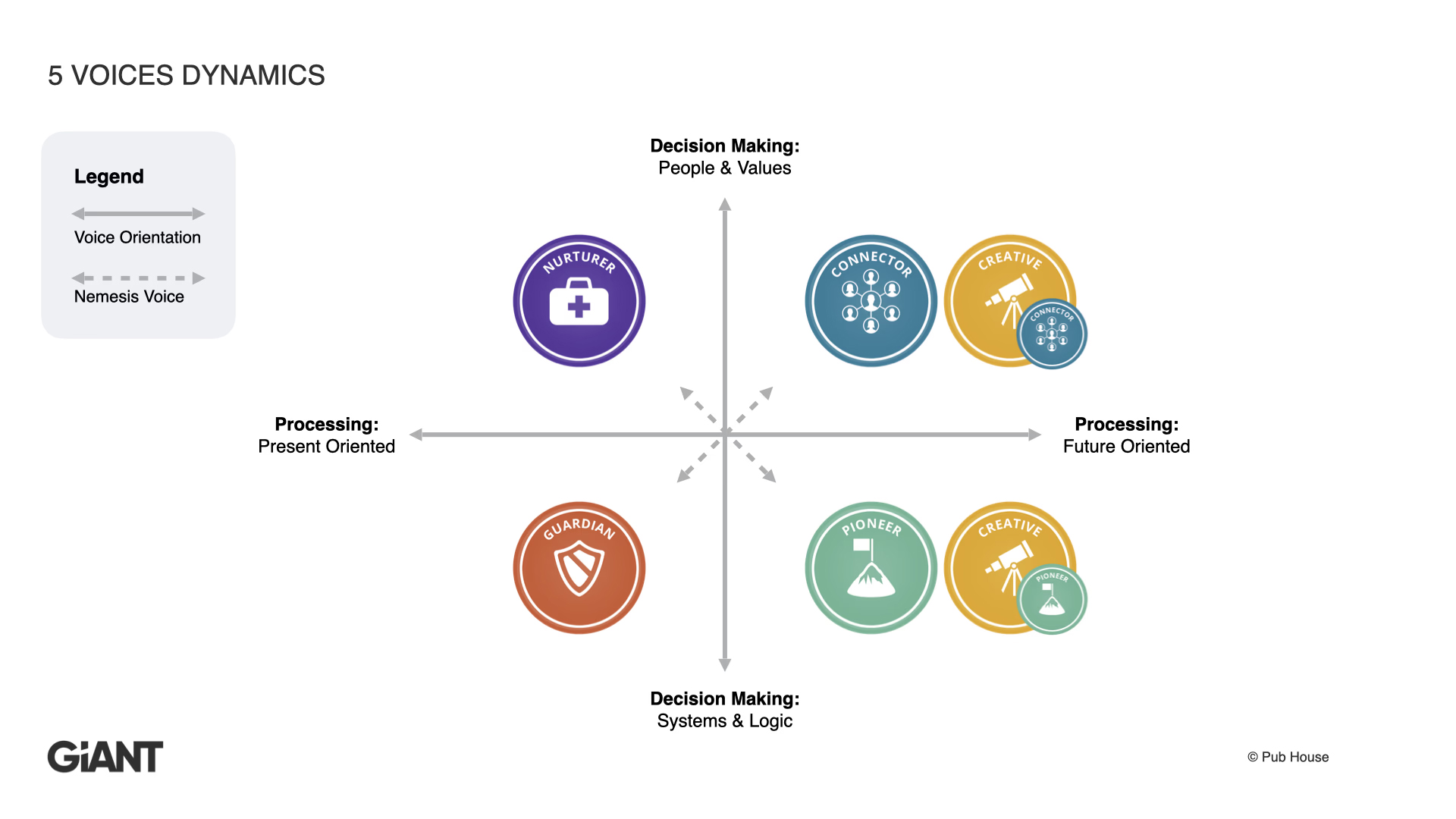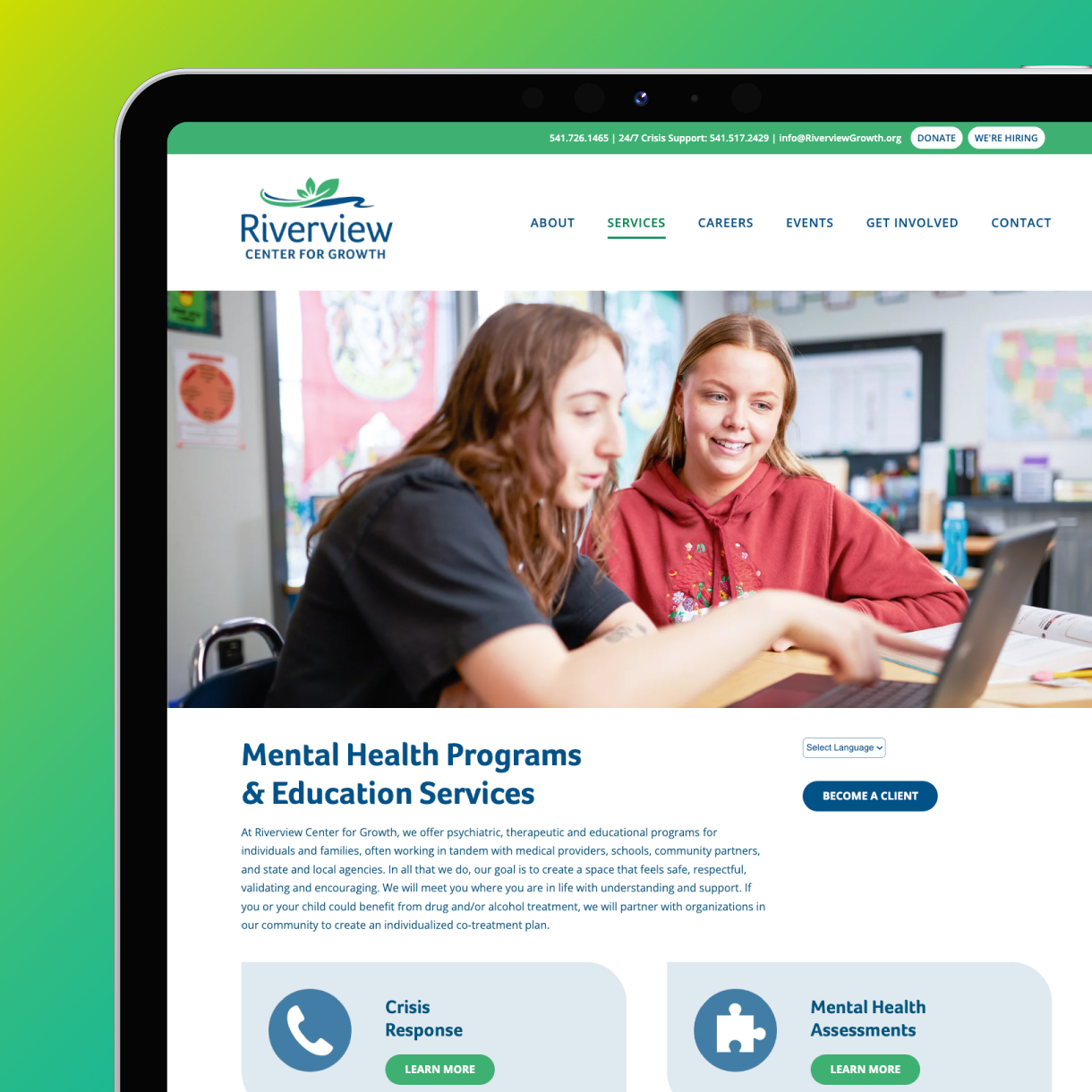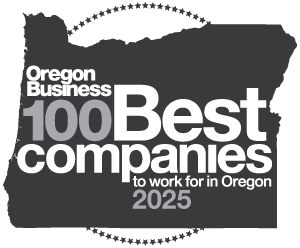Team News
GiANT Steps for TG: Better Understanding Team Roles
February 4, 2025
Anyone who has worked at a business knows how important relationships are within an organization. Understanding one another and developing good relationships lead to good communication, greatly improving the chance of a business’s success and developing stronger bonds with customers.
To that end, Turell Group has been devoting time to regular discussions about our team dynamics with the assistance of the GiANT program. The foundational tool, 5 Voices, outlines five personality types, or voices, to help understand different approaches to leadership. The concept has been used by numerous organizations of all sizes around the globe to improve teamwork and business relationships.
Better Communication
The goal of doing the program was to improve our team’s efficiency in working together, especially after a disruptive pandemic that caused some changes in how we and clients approach things, says Dana Turell, founder and president of Turell Group.
“GiANT gave us language and tools to communicate better, which led to deeper relationships and trust,” she says. “Beyond personality and strengths assessments, GiANT provides tools on how to recognize who we are and what we do in ways that make the biggest impact on ourselves and others.”
Dana attributes the valuable insights we’ve gained through GiANT as a key factor in our recent recognition as one of the 100 Best Companies to Work For in Oregon, as ranked by Oregon Business magazine.
We’ve been led through the coursework by Matt Purvis, president and CEO of Purvis Management and a guide at GiANT Worldwide. He says the sessions help team members realize their strengths and how they can best contribute.
“High-performing teams are fueled by trust,” he says. “GiANT’s language and visual tools help teams maximize their combined strengths while each team member works on behaviors that limit their influence. This work builds high-performing teams by helping every team member bring their very best.”
Matt has been an excellent guide and has helped us make progress, Dana says. “He’s a good instructor and a fun guy,” she says. “It’s like he’s part of our team.”
5 Voices and How to Recognize Them
The Turell Group team began by taking online assessments to determine which of the 5 Voices are represented among our team members. Here’s a quick rundown of the five different voices:
- Nurturers are the most common of the 5 voices, accounting for about 43% of the population. As natural team players, they emphasize people first while defending values.
- Guardians are the next most common voice type at about 30% of the population. Their focus is on solutions, and they are committed to delivering projects on time and on budget. They ask a lot of questions.
- Connectors, at about 11% of the population, are natural people pleasers. They can be charismatic, persuasive and inspirational.
- Creatives focus on ideas, but they can at times struggle to communicate their ideas unless given an opportunity. They account for about 9% of the population.
- Pioneers are the least common among the 5 Voices, at about 7% of the population. They tend to be natural leaders who can be either inspirational or overbearing. Their primary focus is on results.
Not surprisingly, as a creative agency, Creatives make up a significantly larger portion of our team than the average population, but otherwise, we have a mix of all 5 Voices that work in different ways to support one another and the jobs we do.
Gaining Insights
In a series of discussions, we have talked about the different voices and how they apply in business relationships and scenarios. For example, which voice type is most likely to assume a leadership role? Which is most likely to speak up in a meeting to share ideas, and how can we ensure everyone has a chance to be heard? How might a Guardian typically react to a proposal? How would a Creative react when receiving criticism?
During these meetings, we’ve shared observations of how we feel, during meetings and one-on-one interactions, and how we can be more effective. The discussions have been heartfelt and a little difficult at times, but have more often been fun and insightful while inspiring a lot of reflection. Through it all, we’ve gained a deeper understanding of how we can better support one another and as a result, better serve our clients.
“Like anything, you only get out of GiANT what you put in,” Dana says. “You have to learn the tools, do the self-discovery and practice with others. It’s not easy and often not pretty. But it leads to growth. GiANT is not magic. It just provides a path with a map and guide to lead the way to being a better person and team.”
You might also like…
Subscribe to Talkin’ Turquoise

